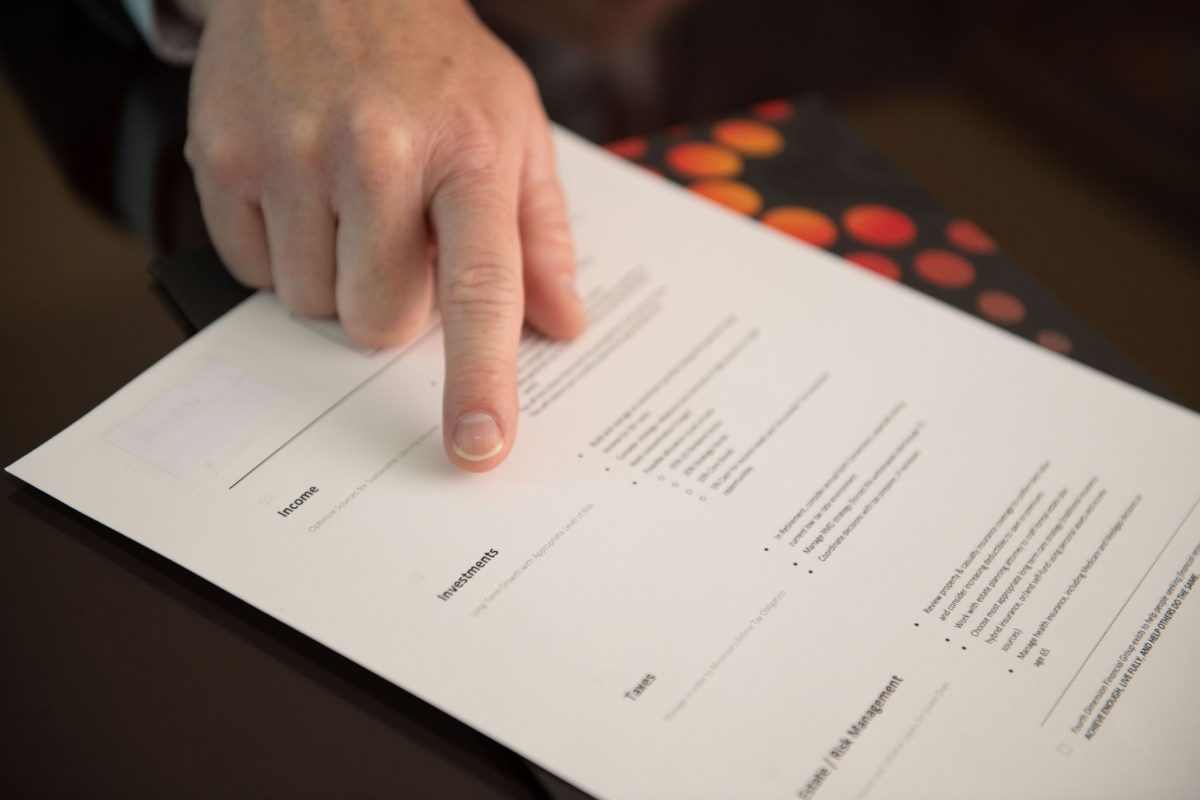
Stephen L. Hanley, Investment Strategist Evergreen Wealth Management
by Stephen L. Hanley
Through many years of experience working with clients and advisors alike, it’s become clear to me that many struggle with the fundamental concepts of investing.
Investing is simply buying a future stream of cash flows.
Investing has many different forms: CDs, bonds, stocks, real estate, farms, etc. Ultimately, all investments fit in one of two broad categories – Debt or Equity. Either you’re loaning money to an entity in exchange for a stated interest rate (future cash flows) through bond ownership, or you’re purchasing ownership of property or a business entity in exchange for their future cash flows after expenses through stock ownership. It’s that simple!
Naturally, with any form of risk-based investing, there’s never complete certainty regarding the amount or timing of the future cash flows; this is one of the risks. A rational person will pay more (accept a lower potential return) for a more certain stream of cash flows, and pay less (demand a higher potential return) for less certain cash flows. Real risk, the possibility of losing money over long stretches of time, is relative to cash flow timing and certainty, but with some research this can largely be calculated and controlled.
Let’s look at AT&T as an example. AT&T stock pays a dividend of roughly $2 per year. If we’re able to buy a share of AT&T stock for the same amount of $2, and they continue to cash flow and pay us the cash flow, then we only need one year to make all of our money back. If we instead pay $20 for the stock, we would need 10 years of $2 annual dividends to make our money back in full. If we pay today’s price of around $40 per share, it would take roughly 20 years to make all our money back!
AT&T has paid an increasing dividend for over 32 years now. The risk of AT&T not continuing to pay a dividend is very low. It’s more likely their dividend will actually continue to grow. Therefore, as investors with a long time horizon, we know the risk of not getting all our money back in 20 years is extremely low, thanks to their dividend-paying history. While we may prefer other companies with better cash flows or growth of cash flows, you can clearly see that given enough time, the risk of owning any solid company should be low.
Having a meaningful amount of your portfolio in solid companies with good cash flows and waiting 5, 10, or 20 years for the future cash flows to build is the fundamental building block for investing. Unfortunately, many investors struggle with the concept of ‘risk.’ They stop looking at cash flow provided and start focusing on daily price, leading many would-be successful investors astray.
It’s important to consider that the US Stock and Bond market is one of the greatest inventions ever created. The ability to buy or sell a company on any day, Monday through Friday, is incredible. However, the daily auction is often viewed in a very skewed fashion by many investors and can create non-productive emotions. Using our previous example, AT&T’s stock price dropped over 45% from 2007 to 2008, but the cash flow paid out to investors actually grew by 14% during that same time, giving investors a pay raise! The market was simply communicating crazy prices that did not reflect the real value or real risk of the company.
Let me share a little wisdom from Warren Buffet, likely the greatest market investor
of all time:
“It should be an enormous advantage for investors in stocks to have those wildly fluctuating valuations placed on their holdings — and for some investors, it is. After all, if a moody fellow with a farm bordering my property yelled out a price every day to me at which he would either buy my farm or sell me his — and those prices varied widely over short periods of time depending on his mental state — how in the world could I be other than benefited by his erratic behavior? If his daily shout-out was ridiculously low, and I had some spare cash, I would buy his farm. If the number he yelled was absurdly high, I could either sell to him or just go on farming.
Owners of stocks, however, too often let the capricious and irrational behavior of their fellow owners cause them to behave irrationally as well. Because there is so much chatter about markets, the economy, interest rates, price behavior of stocks, etc., some investors believe it is important to listen to pundits — and, worse yet, important to consider acting upon their comments.
Those people who can sit quietly for decades when they own a farm or apartment house too often become frenetic when they are exposed to a stream of stock quotations and accompanying commentators delivering an implied message of “Don’t just sit there — do something. For these investors, liquidity is transformed from the unqualified benefit it should be to a curse.”
What an amazing summary of the key to investment success. Ignore pundits, never act on emotion, embrace declining price movement as opportunity, sit quietly for decades, and enjoy the benefits of cash flow building.
Investors who focus on short-term price movements and short-term benchmarking create unnecessary – and usually unproductive – emotion. Given enough emotion, some will make very bad decisions. We have a choice every day to participate in these emotions or benefit from these emotions. When prices go crazy, the smart investors focus only on what the investments are producing and will continue to produce and not on the daily market yelling a crazy low price like the noisy farmer.
We maintain a high focus on the current and future cash flow producing abilities of the companies in which we invest. We ask ourselves, “Does the future cash flow of this company meet our investing objectives?” If the answer is yes, we continue on with certainty. If no, we consider other alternatives.’
“Games are won by players who focus on the playing field – not by those whose eyes are glued to the scoreboard.” –Warren Buffet
Finally, we often hear people expressing fear of the market dropping to zero, the system completely crashing. While it’s prudent to ask this ‘what if’ question, as long as the markets have cash flow-producing investments, this is just not possible. Fear of such outcomes comes from listening to pundits, the noisy media, and the crazy farmer yelling absurdly low prices over the fence. When we switch our focus to the buildings, farms, pipelines, profits, dividends, interest and cash flows we own, the fear should pass and perhaps be replaced with some excitement to own even more future cash flows. With understanding (and some practice), we can quantify real risk by ignoring day-to-day noise and be rewarded with a future stream of growing cash flows, allowing us to meet our investing objectives. And isn’t that what we really want?
Recent Articles

Show Your Work: Why Transparency Matters in Retirement Planning

Unlocking the Mystery of Income Taxes

Social Security Strategy: Do You Have One?

Pension Decision: Just One Critical Piece of Information Is Needed to Decide



